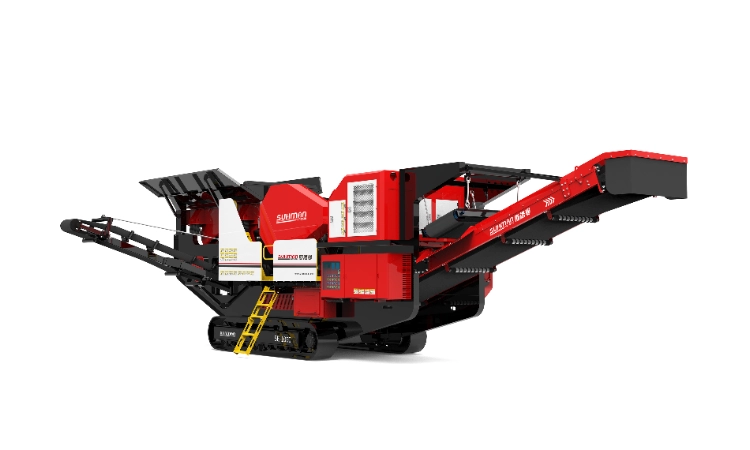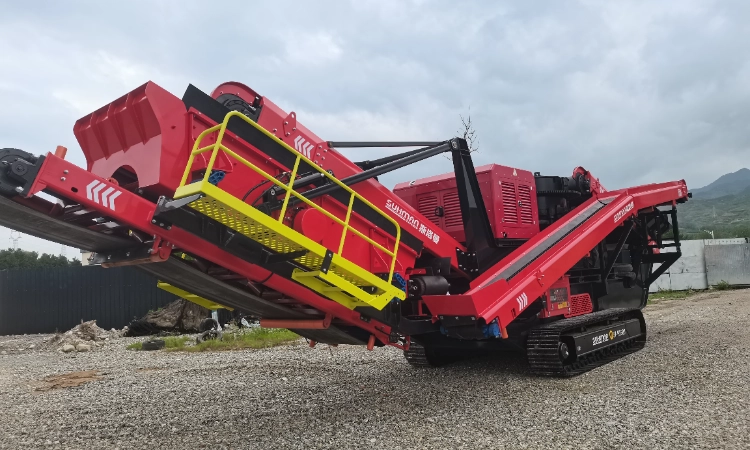How Impact Crushers Transform Granite and Basalt into Quality Aggregates
Release time: 2025-03-01
Introduction to Impact Crushers
Crushing equipment is the backbone of industries that rely on transforming raw materials into usable products. Whether it’s breaking down massive rocks in a quarry or recycling concrete from a demolition site, the right crusher can make all the difference. The impact crusher, in particular, has earned a reputation for its ability to handle tough, high-hardness materials while delivering consistent, high-quality output. This guide will take you through everything you need to know about impact crushers, from their basic mechanics to their advanced applications, with a special focus on their suitability for crushing hard rocks like granite, basalt, andesite, and river pebbles.
What is an Impact Crusher?
An impact crusher is a specialized piece of equipment designed to break down materials by applying high-speed impact forces rather than compression or abrasion, as seen in jaw or cone crushers. This unique crushing mechanism makes it exceptionally effective for processing materials ranging from medium to high hardness, including natural stones and recycled aggregates.
The primary function of an impact crusher is to reduce the size of raw materials—such as rocks, ores, concrete, or asphalt—into smaller, manageable pieces. What sets it apart is its ability to produce uniform, cubic-shaped particles, which are highly valued in industries like construction for producing concrete and asphalt aggregates. These qualities make the impact crusher a go-to choice for applications requiring precision and efficiency.
For businesses dealing with high-hardness stone crushing, such as granite or basalt, impact crushers offer a robust solution that combines durability with performance. SUHMAN CRUSHER, a leader in crushing technology, provides advanced options like the Mobile Impact Crusher for Sand Making, tailored to meet these demanding needs.
How Does an Impact Crusher Work?
Understanding the mechanics of an impact crusher is key to appreciating its efficiency. At its core, the machine relies on a high-speed rotor fitted with hammers or blow bars that deliver powerful impacts to break apart materials. Here’s a detailed look at the process:
- Material Entry: Raw materials are fed into the crusher through a feed inlet, typically via a hopper or conveyor system.
- Impact Action: As the rotor spins at speeds often exceeding 500 RPM, the attached hammers strike the incoming material with significant kinetic energy.
- Collision with Breaker Plates: The force propels the material against stationary breaker plates or impact aprons, causing it to shatter upon contact.
- Repeated Impacts: The fragmented material rebounds back into the path of the spinning hammers, undergoing multiple impacts until it reaches the desired size.
- Discharge: Once sufficiently reduced, the material exits through a discharge gap at the bottom of the crusher.
This process is particularly effective for shaping aggregates, as the repeated impacts refine the particle edges, resulting in a cuboidal shape ideal for high-quality concrete production. For hard rocks like river pebbles or andesite, the impact crusher’s ability to deliver consistent force ensures efficient size reduction without excessive wear on the machine.
Types of Impact Crushers
Impact crushers come in two main configurations, each suited to specific applications and material types:
1. Horizontal Shaft Impact (HSI) Crushers
- Design: Features a horizontal rotor with hammers or blow bars that strike material against fixed surfaces.
- Applications: Best for softer materials like limestone or recycled concrete, though robust models can handle harder stones.
- Benefits: High reduction ratios and a significant output of fines, making it suitable for aggregate production.
2. Vertical Shaft Impact (VSI) Crushers
- Design: Utilizes a vertical rotor that accelerates material outward against anvils or impact plates.
- Applications: Ideal for producing fine, uniform particles such as manufactured sand from hard stones like granite or basalt.
- Benefits: Superior particle shaping and consistency, critical for sand-making operations.
Both HSI and VSI crushers serve distinct purposes. For businesses processing high-hardness stones, a VSI crusher often excels due to its precision in producing sand and fine aggregates.
Advantages of Using Impact Crushers
The impact crusher offers a range of benefits that make it a standout choice across industries:
- High Reduction Ratio: Capable of reducing material size by up to 20:1 in a single pass, minimizing the need for secondary crushing.
- Superior Particle Shape: Produces cubic aggregates that enhance the strength and workability of concrete and asphalt mixes.
- Versatility: Handles a broad spectrum of materials, from soft limestone to abrasive river pebbles, as well as recycled materials.
- Operational Efficiency: High throughput and energy efficiency reduce operating costs over time.
- Ease of Maintenance: Wear parts like blow bars and impact plates are designed for quick replacement, keeping downtime low.
However, operators should be aware of potential drawbacks, such as higher wear rates when processing abrasive stones and the need for dust and noise control systems in certain environments.
Applications of Impact Crushers
The versatility of the impact crusher makes it indispensable in multiple sectors:
- Quarrying: Crushing hard rocks like granite, basalt, and andesite into aggregates for construction projects.
- Construction: Recycling concrete and asphalt from demolition sites into reusable materials.
- Mining: Preparing ores for further processing, such as in cement or lime production.
- Sand Making: Producing high-quality manufactured sand from crushed stone, a critical resource in concrete manufacturing.
For regions where natural sand is scarce, impact crushers—particularly VSI models—play a vital role in meeting demand sustainably.
Impact Crushers for High-Hardness Stones
High-hardness stones like granite, basalt, andesite, and river pebbles pose unique challenges due to their durability and abrasiveness. The impact crusher is uniquely suited to tackle these materials, thanks to its robust design and high-impact mechanism. Here’s why it excels:
- Durability: Built with wear-resistant materials, impact crushers withstand the abrasive nature of hard rocks.
- Efficiency: The high-speed rotor delivers sufficient force to break down even the toughest stones in fewer passes.
- Screening Integration: Many models, like SUHMAN CRUSHER’s Mobile Impact Crusher, include screening capabilities to sort crushed material on-site.
This makes impact crushers an essential tool for quarries and construction firms working with hard rock deposits.
Choosing the Right Impact Crusher
Selecting an impact crusher requires careful consideration of several factors:
- Material Type: High-hardness stones like granite demand a crusher with reinforced components and sufficient power.
- Output Requirements: Fine sand production calls for a VSI, while larger aggregates suit an HSI.
- Capacity Needs: Match the crusher’s throughput to your production goals, measured in tons per hour.
- Mobility: Mobile impact crushers offer flexibility for on-site processing, ideal for multi-location projects.
- Cost Considerations: Balance initial investment with long-term maintenance and operational costs.
Consulting with experts, such as the team at SUHMAN CRUSHER, can help tailor the choice to your specific needs.
Maintenance Tips for Longevity
To maximize the lifespan and performance of an impact crusher, follow these maintenance practices:
- Inspect Wear Parts: Regularly check hammers, blow bars, and impact plates for wear and replace them promptly.
- Lubricate Components: Keep bearings and moving parts well-lubricated to reduce friction.
- Control Dust: Use suppression systems to protect the machine and comply with environmental standards.
- Monitor Performance: Track vibration and noise levels to detect issues early.
- Adjust Settings: Optimize rotor speed and discharge gap for different materials.
Proper care ensures consistent output and reduces costly repairs.
SUHMAN CRUSHER’s Mobile Impact Crusher
For businesses seeking a state-of-the-art solution, SUHMAN CRUSHER’s Mobile Impact Crusher for Sand Making offers unmatched versatility and efficiency. Designed to process high-hardness stones, this machine combines mobility with advanced technology.
Key Features:
- Portability: Mounted on a mobile chassis for easy transport and setup.
- High Performance: Delivers exceptional reduction ratios and cubical sand output.
- Versatility: Handles materials from limestone to granite with ease.
- Integrated Screening: Ensures precise particle sizing on-site.
Why Choose It?
- Time-Saving: Combines crushing and screening in one unit.
- Quality Output: Produces sand meeting industry standards for concrete and asphalt.
- Flexibility: Ideal for projects requiring frequent relocation.
Explore more at SUHMAN CRUSHER’s website or contact their team for details.
Comparison of Impact Crusher Specifications
| Type | Rotor Design | Max Feed Size (mm) | Capacity (t/h) | Best For |
|---|---|---|---|---|
| HSI Crusher | Horizontal | 300-700 | 50-400 | Aggregates, Recycling |
| VSI Crusher | Vertical | 30-60 | 100-600 | Sand Making, Fine Shaping |
This table highlights the key differences, aiding in the selection process for specific applications.
Industry Trends and Innovations
The crushing industry is evolving, with trends like automation, energy efficiency, and mobile solutions driving innovation. Impact crushers are increasingly equipped with smart controls for real-time monitoring and adjustments, enhancing productivity and reducing costs.

Conclusion
The impact crusher is a cornerstone of modern material processing, offering unmatched efficiency and versatility for crushing high-hardness stones like granite, basalt, andesite, and river pebbles. Whether you’re producing aggregates, recycling materials, or making sand, this machine delivers reliable results. SUHMAN CRUSHER’s Mobile Impact Crusher for Sand Making exemplifies the latest advancements, providing a practical solution for today’s demanding operations.



